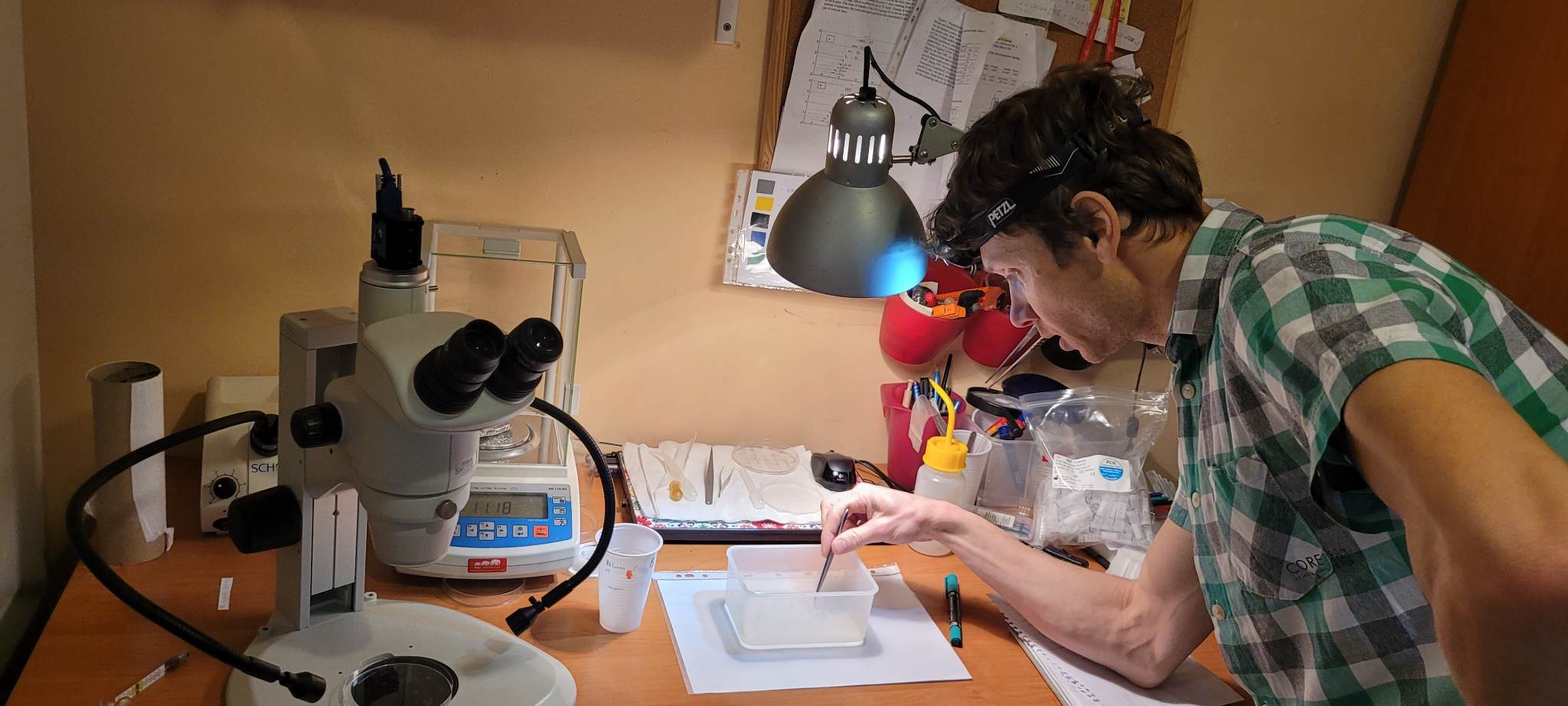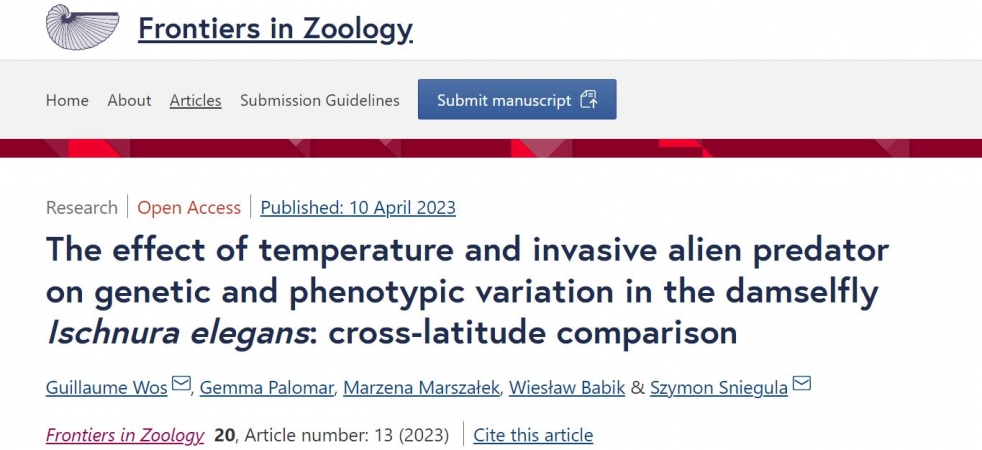We are delighted, together with the team of authors, because the first article directly based on the results of the Ecopond project has been published in Frontiers in Zoology.
Details:
Guillaume Wos, Gemma Palomar, Marzena Marszałek, Wiesław Babik, Szymon Sniegula, 'The effect of temperature and invasive alien predator on genetic and phenotypic variation in the damselfly Ischnura elegans: cross-latitude comparison'. Frontiers in Zoology 20, 13 (2023). https://doi.org/10.1186/s12983-023-00494-
DOI: 10.1186/s12983-023-00494-z
Link: https://frontiersinzoology.biomedcentral.com/articles/10.1186/s12983-023-00494-z
Zenodo: https://zenodo.org/records/7852131
ABSTRACT
Understanding and predicting how organisms respond to human-caused environmental changes has become a major concern in conservation biology. Here, we linked gene expression and phenotypic data to identify candidate genes underlying existing phenotypic trait differentiation under individual and combined environmental variables. For this purpose, we used the damselfly Ischnura elegans. Egg clutches from replicated high- (southern Sweden) and central-latitude (southern Poland) populations facing different degrees of seasonal time constraints were collected. Damselfly larvae were exposed to experimental treatments: current and mild warming temperatures crossed with the presence or absence of an invasive alien predator cue released by the spiny-cheek crayfish, Faxonius limosus, which is only present in Poland to date. We measured the following traits: larval development time, body size, mass and growth rate, and used the larvae for gene expression analysis by RNA-seq. Data were analysed using a multivariate approach.
Results
We showed latitudinal differences in coping with mild warming and predator cues. When exposed to an increased temperature and a predator cue, central-latitude individuals had the shortest development and the fastest growth compared to high-latitude individuals. There was a general effect of predator cues regarding mass and growth rate reduction independent of latitude. Transcriptome analysis revealed that metabolic pathways related to larval anatomy and development tended to be upregulated in response to mild warming but only in fast-growing central-latitude individuals. Metabolic pathways linked to oxidative stress tended to be downregulated in response to a predator cue, especially in central-latitude individuals.
Conclusion
Different phenotypic and transcriptomic responses to environmental factors might be attributed to the variability in I. elegans life history strategies between the two latitudes caused by seasonal time constraints and to its coexistence with the invasive alien predator in nature. By providing insights into how organisms may respond to future anthropogenic changes, our results may be of particular interest in conservation biology.


Conducting the experiment, laboratory IOP PAN, Kraków



